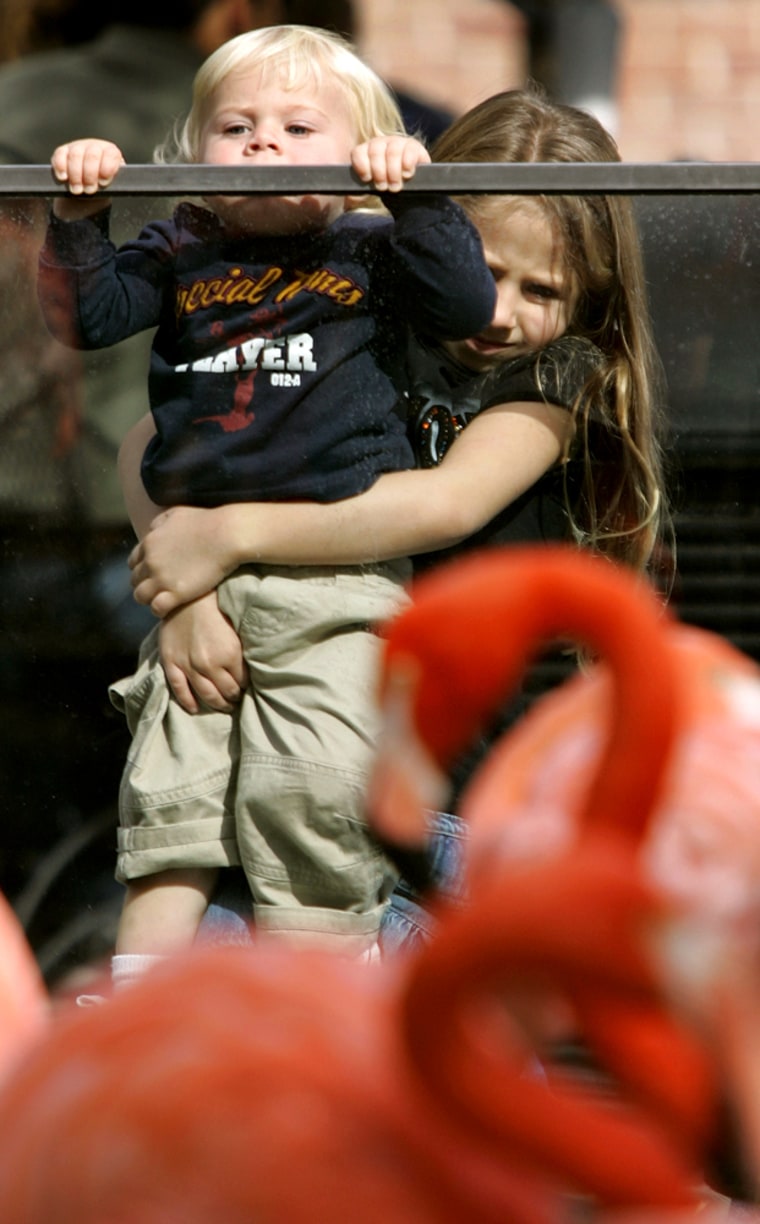Thousands of people, some in tears, streamed into the Audubon Zoo on Friday, the first day it was open since Hurricane Katrina.
“It’s a city without kids and families, and a city without kids and families is a city without soul and heart,” said Ron Forman, president of Audubon Nature Institute, which operates the zoo. “So we just thought it was critical to get the thing open for Thanksgiving weekend.”
The reopening was so emotional for many visitors that the zoo decided to post huggers at the front gates, Forman said.
“As people walk in, they’re crying,” he said. “This is a time of sadness in this city.”
Like much in the city, the zoo has struggled to regain its footing after the hurricane. Most of the animals are fine, although two otters and a raccoon did not survive, and about 2,000 trees were destroyed. The zoo laid off about 600 workers.
Audubon also operates the Aquarium of the Americas in the French Quarter, where about 10,000 aquatic animals died because of the hurricane. The aquarium and its Entergy IMAX Theater will open next summer at the earliest, Forman said.
Another Audubon facility, the Louisiana Nature Center, may never reopen, he said. The opening for a new addition to the institute — an insectarium — has been pushed back to 2007.
Struggling ‘back to normal’
By the zoo’s scheduled 10 a.m. opening time, some 1,000 parents and children were lined up outside the gates of the 120-year-old facility, peering in at gaudy pink flamingos on view just inside. By noon, the lawns and paths were packed.
“This is part of bringing this city back to normal again,” said Alaina Vizcarrondo, who had been a twice-a-week visitor before Katrina and brought her 3-year-old son, Kevin, on Friday to see his favorite animals. “We’ve been waiting for the zoo to open again.”
The zoo, one of the oldest and best known in North America, emerged as one of the happy stories of Katrina, the powerful storm that killed more than 1,000 people in Louisiana alone when it hit Aug. 29.
The hurricane snapped off branches and uprooted trees across the park. But while branches and bamboo still hang haphazardly over some enclosures, the bulk of the debris from Katrina somehow fell without causing major damage to zoo buildings or the animals’ enclosures.
Fortunate high ground
Eighty percent of New Orleans was inundated after the storm breached protective levees but the zoo was spared from the floodwaters because it is located on high ground.
“Ron Forman must be the luckiest man out there and he was lucky this time. The trees fell the right way,” curator Dan Maloney said in an interview interrupted repeatedly by greetings to visiting families and diversions to pick up cups or papers and deposit them in trash cans.
Maloney and a handful of other zoo staff waited out the storm in the windowless Reptile House, a sturdy brick building at the edge of the zoo.
“We had always known we had to be ready to look after ourselves after a hurricane because the authorities would be looking after the people and all that preparation paid off,” Maloney said.
But he admitted things were uncertain in the first days after the storm, when both power and water failed, and staff could hear shooting in the chaotic city.
At one time the staff prepared a quarantine facility to be used as a holding cell for anyone caught trespassing on the property “until the police arrived” but Maloney said they never had to use it.
Tourists have yet to return to New Orleans, once a city of almost half a million, and large parts of the city are still uninhabited and uninhabitable.
“You may have 30,000 or 40,000 people sleeping in New Orleans right now and I wouldn’t be surprised if 40,000 show up at the zoo this weekend,” Forman said.
“The city of New Orleans was a thriving, beautiful, unique city and overnight the city was destroyed,” he said. “It became a city without children. But people are coming back now ... and we had to do everything we can to open the zoo and to bring the families back.”
